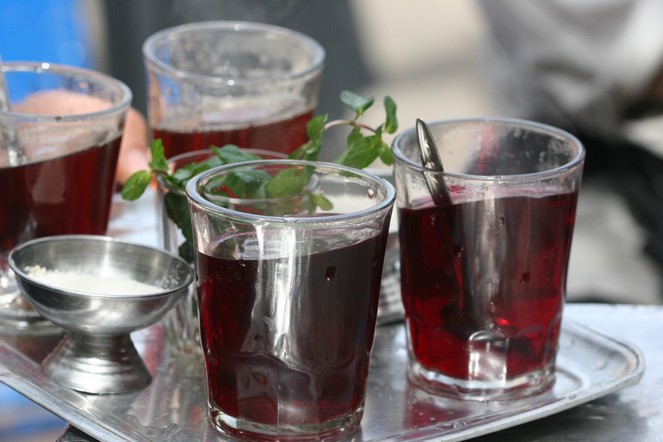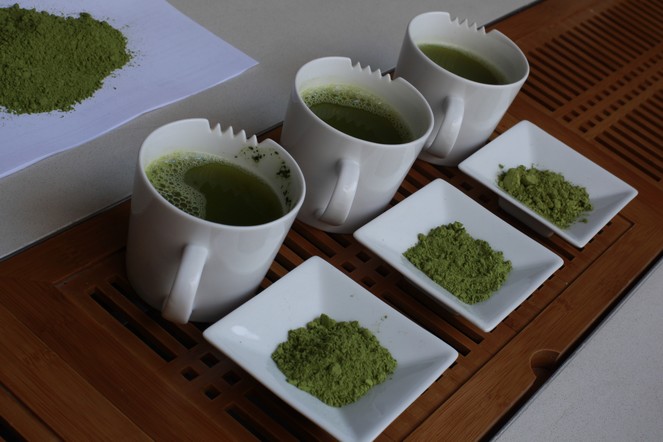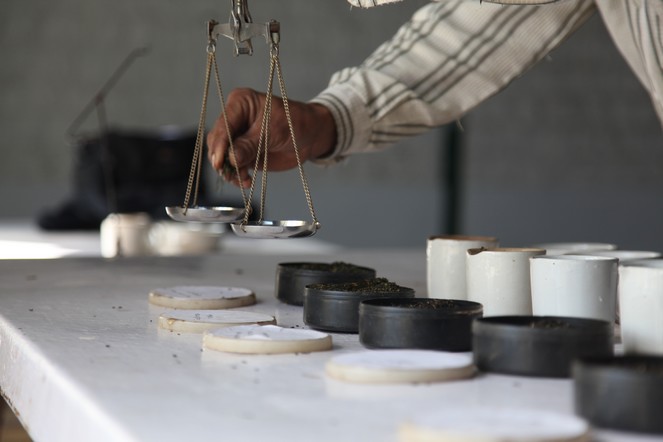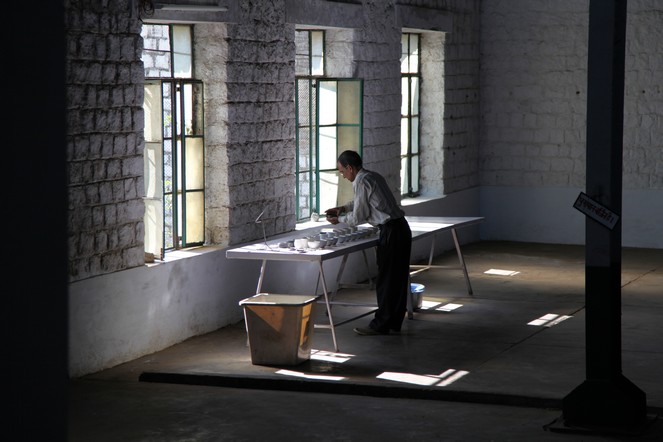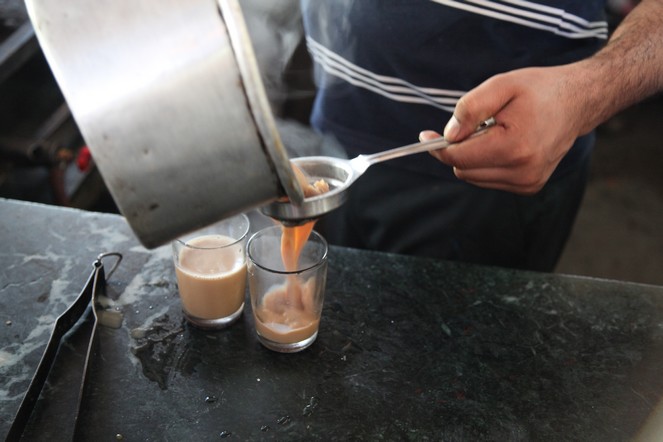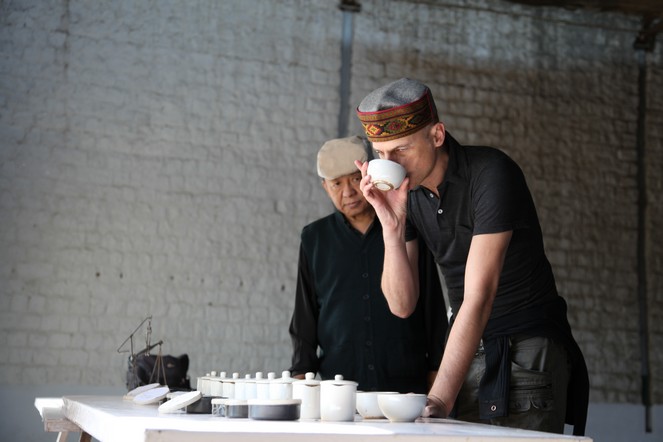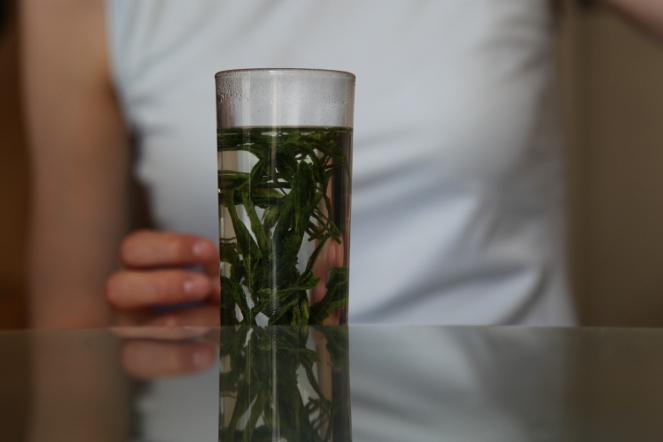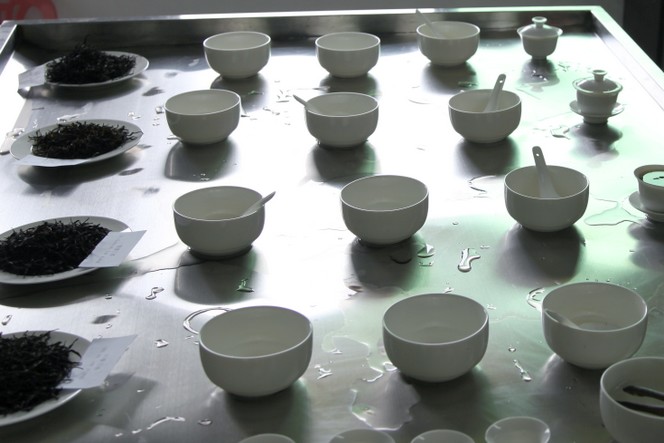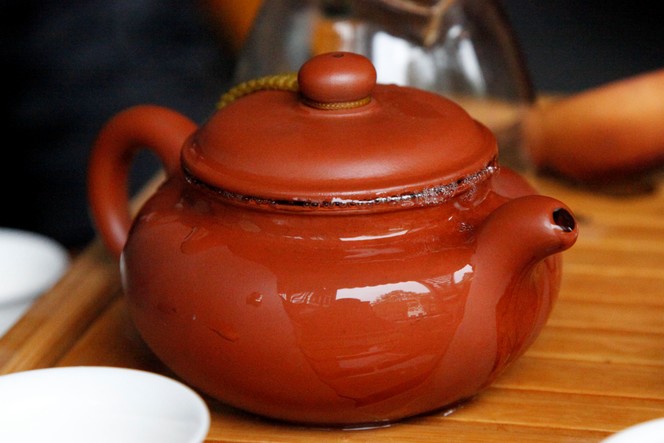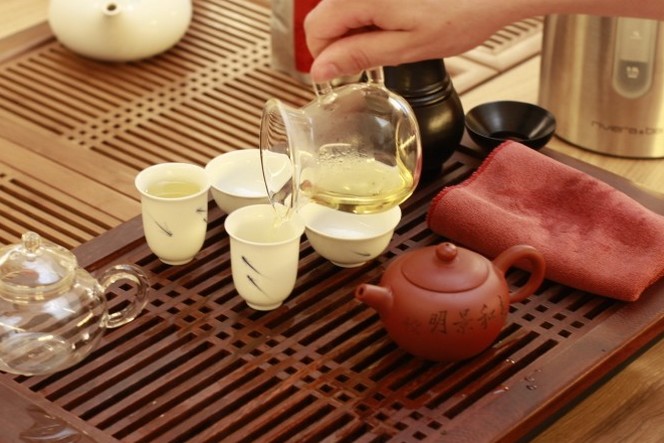I hear that there is much talk of marriage at the moment in France, and the opportunity has arisen for me to tell you what I think of it.
If there is one marriage I cannot recommend, it is tea with a slice of lemon. The effect of the acidity alters the tannins and the aromas, and the result is not particularly harmonious.
On the other hand, if we look at practices around the world, tea is open to many marriages: with mint leaves in Morocco, cardamom pods in Afghanistan, rancid yak butter in Tibet, jasmine flowers in China, a drop of milk in Britain, and with a little of all the spices in India.
Vive la différence – and vive l’harmonie!
Tea and food
Tasting cooking matchas
Every day, I have the pleasure of tasting very different teas. But the technique is always the same, and in each tasting session my senses are alive to the experience. I pay as much attention to the tea’s colour, smell and texture as to its flavours.
Here, I’m tasting three different cooking matchas in order to choose the best one. This powdered green tea from Japan can be used to flavour your cakes, sorbets and other dishes. Even a Christmas log, why not?
Measuring the tea carefully for tastings
When you make yourself a cup of tea, you naturally don’t need to measure out the leaves to the nearest milligram.
It’s not the same for me. At each comparative tasting the tea must be weighed with the utmost precision, otherwise I can’t assess each liquor properly.
Concentrating on the aromas and flavours of tea
Tea tasting requires nothing more than a table, fresh water brought to the correct temperature, an attentive assistant and good light.
A peaceful place like this one helps you concentrate on the essentials: the tea’s aromas and flavours.
Spiced tea along Indian roadsides
All along the roadsides in India there are many stalls serving delicious spiced tea. The flavour varies according to the mood of the person preparing it and the clientele’s preferences.
Here, near Jammu (India), I’m about to taste the local brew. I’m particularly looking forward to it as I don’t often come to Kashmir. I can’t wait to discover the flavour they give their chai around here.
Tasting in Dharamsala
A tasting session at the Manjhee Valley Tea Estate in the company of its manager, Chettaranjan Rai. The Manjhee Valley Tea Estate is in Dharamsala and produces some of the best teas in the region.
Before this, Chettaranjan worked for more than 10 years on tea plantations in Darjeeling, and is extremely experienced. Here, he is watching me closely, waiting to see what I think of his production.
Tea: a simple pleasure
Sometimes I hear people say that they would drink tea if only they knew how to go about it, and that they worried about getting it wrong.
But tea is simply this, as Sen No Rikyû said: heat the water, make the tea, and drink it as it suits you.
The “zhong”: a good means to assess a tea’s potential
There are many ways of drinking tea. At home you can use a teapot, a mug, a “kyusu” or a “zhong”, to name a few…
When I visit farmers I discover other methods of preparing tea, sometimes using different equipment. So I adapt my approach to the tasting according to the method used. Here, with our producer of Dan Congs, the teas are infused three times in a row, in a zhong, and each infusion is poured immediately into one of the bowls set out in front. We taste each of the three liquors, and can then easily assess the tea’s potential to be prepared using the “Gong Fu Cha”.
A good reason to use a tea boat
When you make tea according to the Gong Fu method, you fill your teapot right to the top, even letting the water spill over to get rid of the scum. Hence the use of the tea boat, the recipient on which the teapot is placed here, which serves as a receptacle.
Swapping the kyusu for the tea boat
As I am leaving Japan for China, I am also swapping the “kyusu” for the tea boat. You pour the tea into the first cup, which is quite narrow. You then empty this cup into the wider one. The smelling cup retains the fragrances of the liquor for a long time and allows you to explore the tea’s bouquet. You drink from the second cup, the tasting cup.

